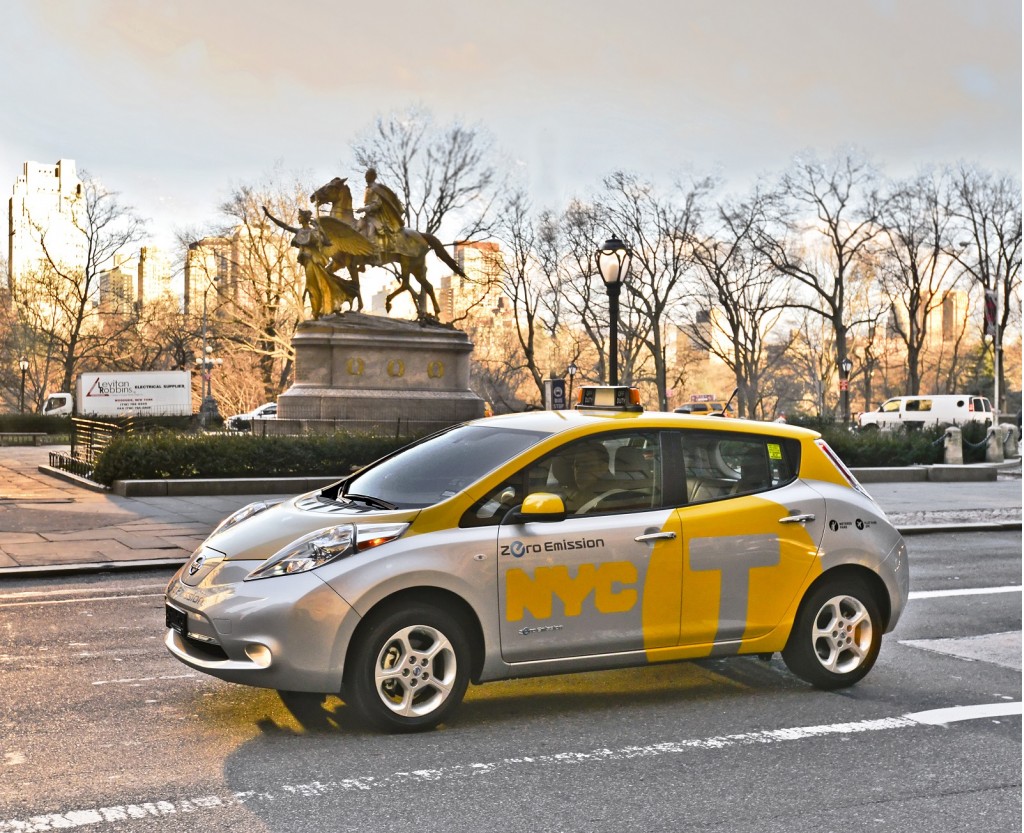New York City's efforts a decade ago to clean up pollution from old taxi models has worked—mostly—a new study shows.
The study, by researchers at the Columbia University Mailman School of Public Health (in New York) and Drexel University, and published in the Journal of Exposure Science & Environmental Epidemiology, shows that the effort reduced emissions of nitrogen oxides across the city by 82 percent and emissions of particulate matter linked to respiratory diseases by 49 percent.
Starting in 2009 under then-mayor Michael Bloomberg, the city imposed fuel economy standards for new medallion taxis—yellow cabs and the newer green taxis that travel to outer boroughs and Long Island, but not Uber and Lyft cars which fall under separate regulations. The new standards set aside 9 percent of city medallions for hybrids and granted hybrids longer life-spans than the three years the city normally imposes on yellow cabs.
All new NYC taxis starting in 2009 were required to have EPA city mpg ratings of at least 25 mpg and after October 2009 that was raised to 30 mpg. (Exceptions were made for wheelchair accessible vehicles.)
The move forced thousands of Ford Crown Victorias, based on a platform that dated to 1979, off the road within the next three years. The Crown Victoria was rated at 14 mpg in the city. They were replaced with a variety of models from Toyota Priuses and Camry Hybrids to Ford Escape and Fusion Hybrids, to little Nissan NV200 vans. When it comes to yellow and green cabs in the city, it's hard to find one that isn't a hybrid anymore (other than the little Nissan vans, which are no longer all that common.) There are even some electric cabs, mostly Nissan Leafs.

2013 Nissan Leaf electric car tested as taxi in New York City, April 2013
The effect was to more than double the average city fuel economy of the city's more than 13,500 taxis from 15.7 mpg to 33.1 mpg, with corresponding reductions in pollution.
The researchers used taxi trip data and inspection reports to map taxi-traffic intensity across the city and thereby approximate the nitrogen-oxide and particulate emissions from the vehicles. They then cross-referenced the data with actual air-quality measurements from more than 100 monitoring sites across the city to determine how much pollution could be attributed to cabs.
While the news was overwhelmingly positive, they found that the improvements were concentrated in Manhattan, where taxis are densest, and had less effect in lower-income outer boroughs where incidences of respiratory illnesses are higher.
Still, the study shows a path to progress. As study co-author Frederica Perera, a professor of environmental health sciences at Columbia says, "This study provides evidence that air pollution legislation can have real impact. Even though overall, yellow taxis account for a small proportion of vehicular miles traveled on New York City’s streets, in midtown they account for almost half. Similar regulations targeting other vehicles could make an even bigger difference."












